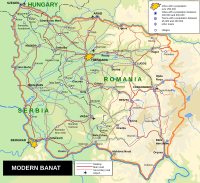
Photo from wikipedia
Two distinct Permian volcanic epochs were revealed in the Pannonian Basin (eastern Central Europe) by U–Pb zircon geochronology: an older one (~ 281 Ma, Cisuralian) in the ALCAPA Mega-unit (Central Transdanubia, Hungary)… Click to show full abstract
Two distinct Permian volcanic epochs were revealed in the Pannonian Basin (eastern Central Europe) by U–Pb zircon geochronology: an older one (~ 281 Ma, Cisuralian) in the ALCAPA Mega-unit (Central Transdanubia, Hungary) and a younger volcanic episode (~ 267–260 Ma, Guadalupian) in the Tisza Mega-unit (Southern Transdanubia and the eastern Pannonian Basin, Hungary). The former is represented by dacitic subvolcanic rocks (dykes) and lavas, while the latter is dominantly by crystal-rich rhyolitic–rhyodacitic/dacitic ignimbrites and subordinate rhyodacitic/dacitic lavas. Whole-rock (major and trace element) geochemical data and zircon U–Pb ages suggest close relationship between the samples of Central Transdanubia and volcanic rocks of the Northern Veporic Unit (Western Carpathians, Slovakia), both being part of the ALCAPA Mega-unit. Such correlation was also revealed between the Permian felsic volcanic rocks of the Apuseni Mts (Romania) and the observed samples of Southern Transdanubia and the eastern Pannonian Basin that are parts of the Tisza Mega-unit. The older volcanic rocks (~ 281–265 Ma) could be linked to post-orogenic tectonic movements, however, the youngest samples (~ 260 Ma, eastern Pannonian Basin, Tisza Mega-unit) could be formed in the extensional setting succeeding the post-collisional environment. On the whole, the observed Permian magmatic rocks show significant similarity with those of the Western Carpathians.
Journal Title: International Journal of Earth Sciences
Year Published: 2019
Link to full text (if available)
Share on Social Media: Sign Up to like & get
recommendations!